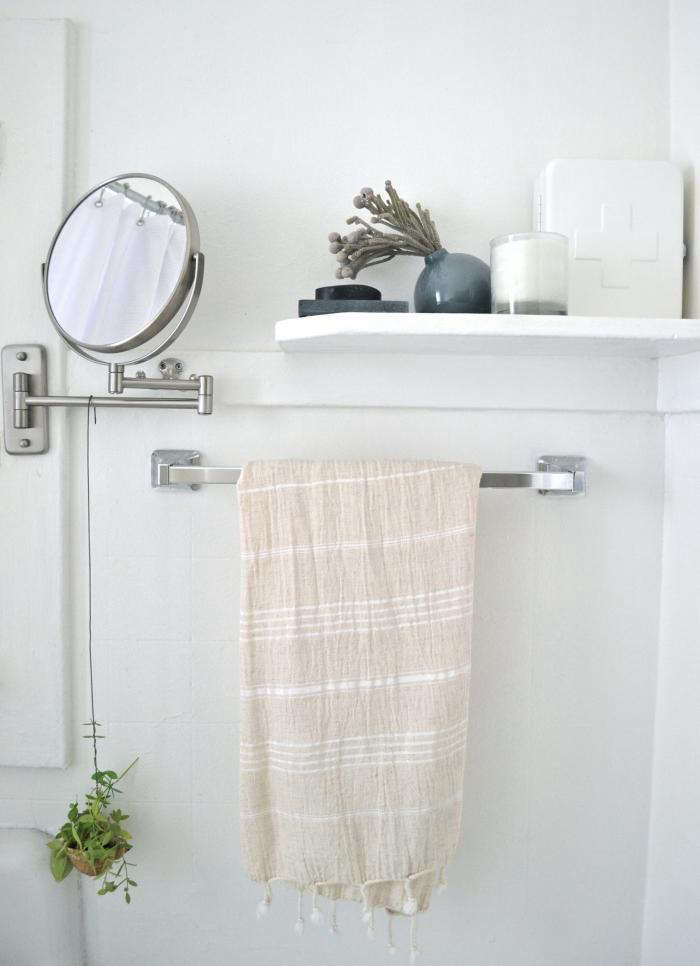The Ant Plant, Dischidia Pectinoides
Nicknamed the ant plant,”Dischidia pectinoides is a curious little specimen that belongs to the same family as milkweed. It is a family of oddballs: climbers and vines with swollen-pocket leaves that resemble ravioli. These pods are called bullate leaves. Their insides can be hollow (not filled with ricotta and spinach) or in the case of some milkweeds, holding sticky, milk-colored fluid. Dischidia pectinoides has leaves with hollow interiors. In its native jungles and rain forests, the leaves are home to ant colonies that help pollinate the plant in exchange for, well, room and board.
But never fear. Though Dischidia pectinoides is a veritable bed and breakfast for bugs in the wild, as an indoor plant, it will not roll out the welcome mat to pests. In fact, for a loyal and low-maintenance bathroom decoration, there is no better choice than the Dischidia pectinoides. Ant plant is an epiphyte, which means it only needs sunlight, air, and a bit of water to survive. Requiring no soil, it thrives in a terrarium or in a shell.

You can also plant Dischidia pectinoides in a 3-inch pot and suspend from the ceiling with a length of twine.

With its moisture and steam, a bathroom reminds the Dischidia pectinoides of its home in the rain forest. This houseplant is so lavatory-loving that it is content to bloom there for years and years, spicing up your loo with tiny red buds. Every time you take a shower, don’t forget you’re also feeding your Dischidia pectinoides its lunch.
Cheat Sheet
- In the wild, it attracts ants that live symbiotically with the plant, exchanging food for pollination (but this won’t happen in your house).
- A flowering climbing vine, it has small red flowers.
- A good companion for other moisture-loving terrarium plants (such as ferns and moss).
Keep It Alive
- Do not pot an ant plant in soil; it is an epiphyte, which means it lives on air.
- Needs filtered sunlight indoors.
- Likes humid spots but only needs occasional watering.
- Tiny varieties are suited for small indoor spaces, though there are larger options.
- Will bloom any time of year if happy.
Looking for more inspiration to get through the indoor-gardening months? See Expert Advice: 10 Best Low-Maintenance Houseplants and Gardening 101: Sea Kelp for Healthy Houseplants.












Have a Question or Comment About This Post?
Join the conversation (0)